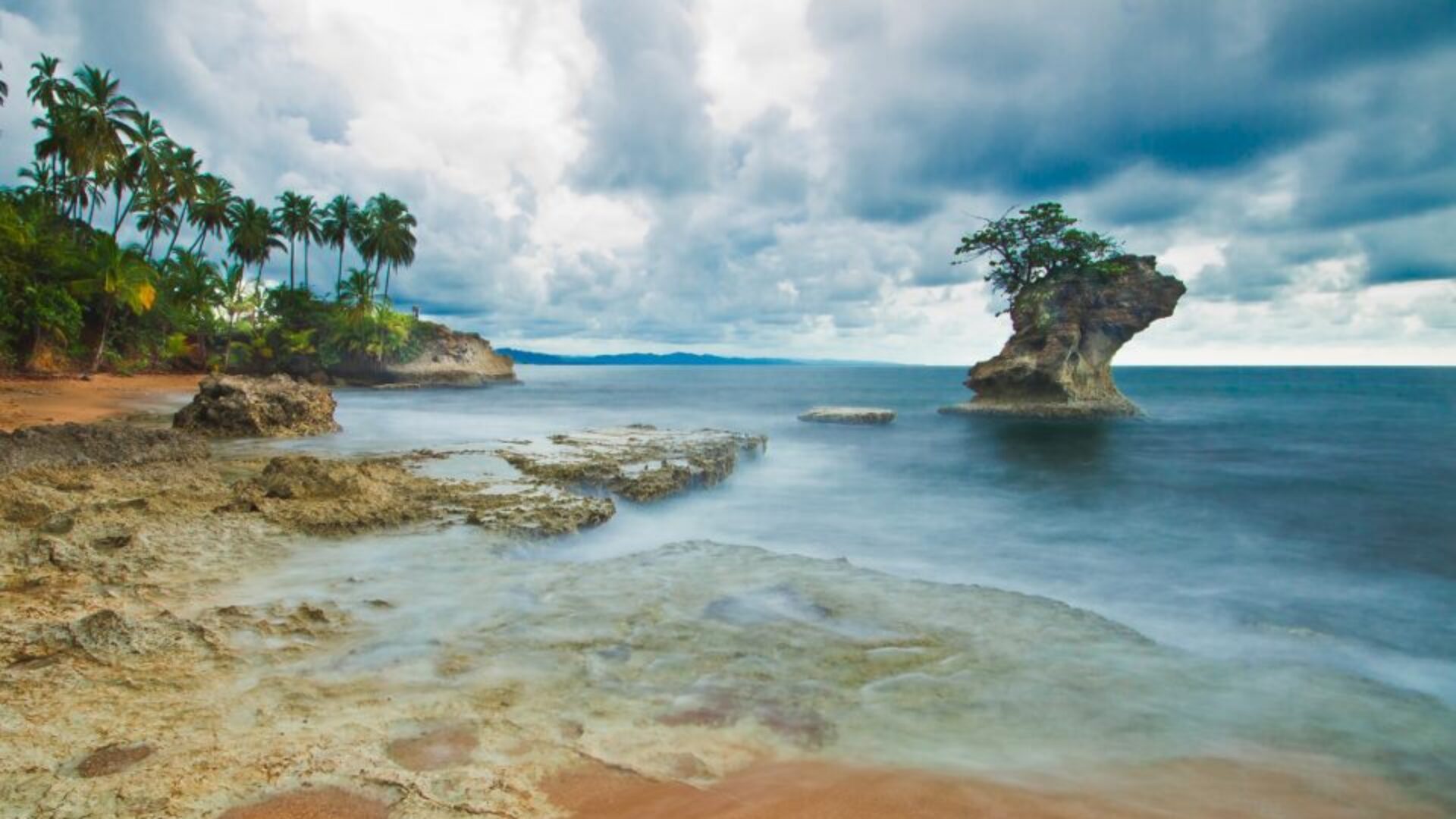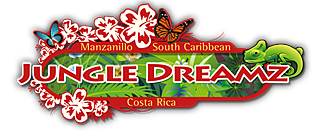Activities in and around Manzanillo
Diving: The barrier reef stretches from the town of Puerto Viejo all the way to the Panamanian border and offers you more than 25 fixed dive locations ranging from shallow coral gardens to deep, fringing reefs and vertical walls dropping to over 140 feet! It is Costa Rica’s only pristine coral reef ecosystem and is largely unexplored.
Indigenous tour: Learn more about the culture of the indigenous peoples of Talamanca where you will learn about local healing plants and methods.
Rainforest tour: On rainforest tours, you will encounter parrots, toucans, sloths, caimans, poison dart frogs and a variety of birds like trogons or colourful manakins. Tropical fruits like guanábana, rambutan, malanga or sugar cane can be tried along the way. Take time to look for animals and learn about the rainforest ecology.
Dolphin watching: On the beach in Manzanillo Town, you will board a motor boat from a local fisherman, who will also act as your tour guide. Along the way you will see pristine rocky sea shores with impressive cliffs and erosion blow holes covered on top by the evergreen tropical rain forest. Finally, you will get to Punta Mona, the southern most point of Costa Rica on the Caribbean Sea and from there, you can spot bottlenose dolphins and the relatively little-known tucuxi dolphins.
Trip to Panama: There are two ways to get to Bocas Del Toro – the islands in Panama. You can take a bus to the border. From there a taxi will take you to the boat. Alternatively, a local fisherman in Manzanillo town may take you with a boat.
Chocolate tour: Learn all about cacao production, from the bean to the chocolate bar.
Tortuguero: There are two ways to get to Tortuguero – by bus and boat, or bus and plane. Tortuguero is basically translated as “turtle placeâ€. It is an extremely important breeding ground for the green turtle. There are a further 3 different types of turtle to be found in Tortuguero. Crocodiles, manatees, sloths, howler monkeys, iguanas and tiny frogs can also be found there. The best times to go are March to October which peaks late July to the end of August.
Parque Nacional Cahuita: Just one hour from Manzanillo, you can visit this relatively small park (1067 hectares). There are white sandy beaches, beautiful coral reef and a coastal rainforest that has lots of wildlife.
Nightlife in Puerto Viejo: There are plenty of bars and clubs in Puerto Viejo and you can find music such as salsa, hip hop, reggae and rock and roll.
Fishing: On the Caribbean Sea, just off the coast of Manzanillo, take the chance to land some amazing catches like tarpon, sailfish, jacks, grouper, barracuda, tuna, snook, blue marlin, king mackerel or red snapper.
Kayaking: Explore Manzanillo’s wildlife refuge where you will see a coast full of cliffs, caves, and the most amazing rainforest.
Botanical Gardens: Here you can taste the local fruits and natural chocolate. Smell the spices and fragrant flowers in the beautiful gardens and spot frogs, birds and a variety of plants.
Surfing in Manzanillo: You will find the best place that sports fast breaks to the right at the northern end.
Surfing in Playa Cocles: When the sea is high you can watch or participate in the surfing at Salsa Brava in front of Stanford’s disco or Beach Break. Beginners often test the waters on black beach over by the barge. The waves here have consistent breaks, with lefts and rights that break close to the beach, making it great for novices and intermediates.
Surfing in Puerto Viejo: Surfing in Puerto Viejo is legendary among the surfing crowd and is one of the top rated surfing destinations in the world. Many international surfers come here from all over the world to ride what has been called the heaviest wave in Costa Rica: The Salsa Brava – a Hawaiian-style wave that builds in the deep waters and whose boxy barrel hammers thunder over the shallow reef.
Surfing in Playa Negra (Black Beach): It offers year-round beach breaks here and, along with Punta Uva, is one of the safest beaches in the area. There’s plenty of fun for beginners here as well as free community surf activities for kids. It is therefore perfect for beginners taking lessons.
Jet Skiing: This is a new activity based in Puerto Viejo. You will be accompanied with a guide to ensure that the coastline is protected.
Sunbathing: There are lots of clean beaches to top up your tan on. Bring a high sun protection cream with you as the sun can be very strong. A sarong is a better option than a beach towel as it is lightweight and dries quickly. Be careful not to choose a spot under a coconut tree as many people die from coconuts falling!

Iguana Sanctuary: A few years ago the green iguana was an endangered species and the Indigenous people decided to help by reproducing them in captivity.
Boat trip: There are many boat trips to choose from – just ask any of the locals who have boats in the village. Alternatively, you can book a boat trip via a local agent but this is a more costly option.
Yoga: There are several places that offer yoga sessions – ask in the village.
Cycling: There are many places that you can rent bicycles cheaply in the area and some accomodations will lend them out with your room.
Horseback riding: There are several options in the area. Make sure you wear long trousers and sturdy shoes. A good tip is to bring sunscreen and insect repellent with you.
Waterfalls: There are several waterfalls in the area – especially in the Talamanca mountains. Bri Bri is another option. Depending on the recent rainfall will determine how big they are.
Spa/Massage: There are several spas between Puerto Viejo and Manzanillo.
Sloth Sanctuary: The Aviarios del Caribe Sloth Sanctuary is a recovery project that rescues injured and orphaned sloths.
Quad biking through the rainforest: Quad bike through the jungle and mountain trails of Talamanca where you will see lots of wildlife.
Turtle watching in Manzanillo: The leatherback turtle is the biggest turtle in the world; it can be as large as 2 meters long and 650 kg of weight and are found in Manzanillo on Gandoca beach. Watch the mothers laying eggs and learn important things about the natural history of these special animals in danger of extinction. The best time to see them is March to July.
White water rafting: There are several places to white water raft within a 30-45 minute drive. There are rivers for all levels.
Jungle night tour: a guide will take you through the jungle late in the night to watch the nocturnal animals and insects.
Canopy tour: one of the most spectacular tours that take you into the heart of the jungle.
Butterfly Gardens: there are a couple of butterfly gardens in the area.


